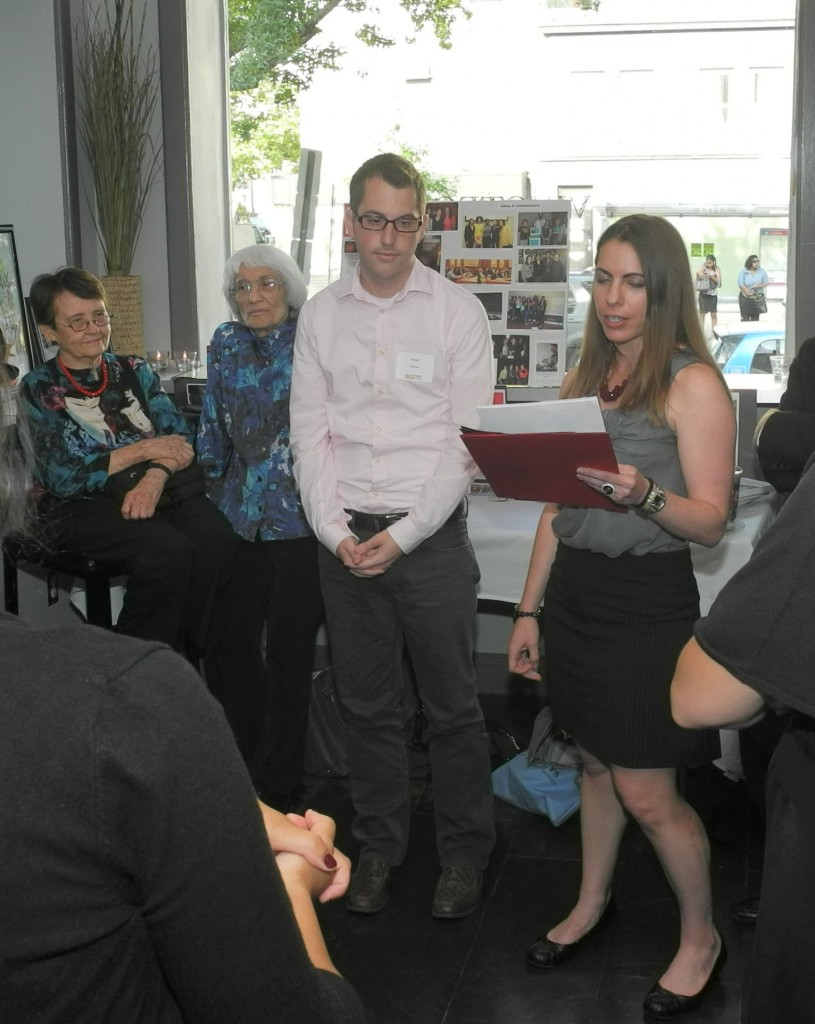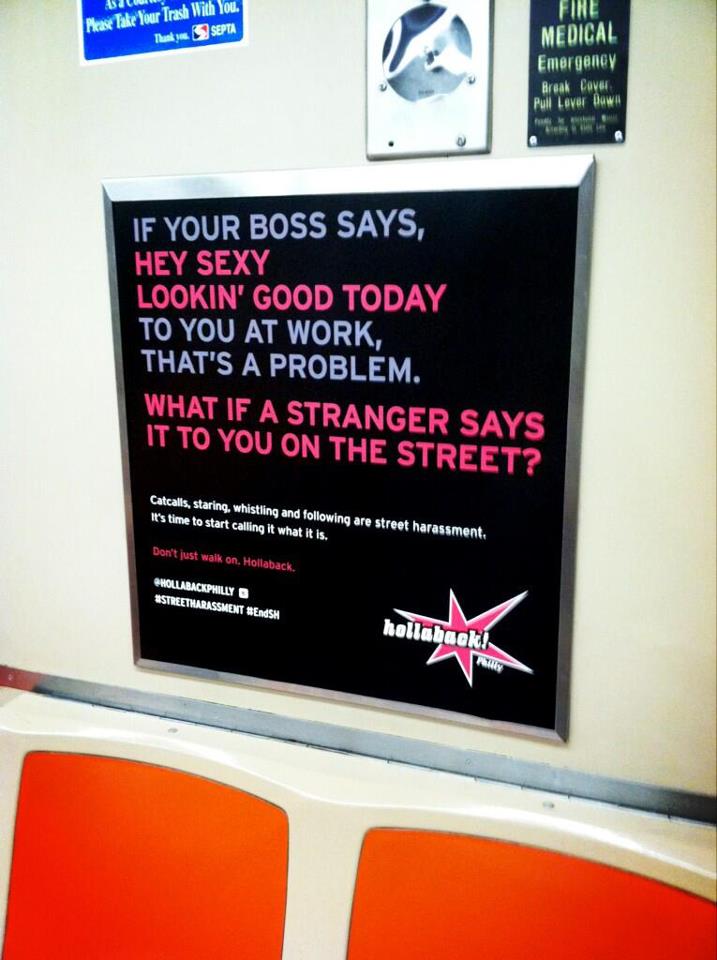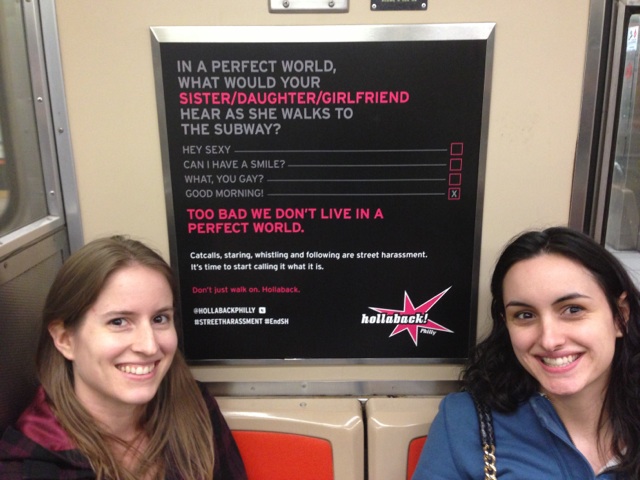
By Sean Crosbie, SSH Correspondent
The event commemorating the fifth anniversary of Stop Street Harassment was held at Vinoteca in D.C. and celebrated the work of many courageous individuals and organizations. Patrick Ryne McNeil was among those honored for his groundbreaking research into street harassment of gay and bisexual men. Patrick’s Master’s thesis at George Washington University here in Washington, D.C. deals specifically on how this street harassment of gay and bisexual men occurs as well as how it relates to – and differs from – women who experience street harassment. I interviewed Patrick for the Stop Street Harassment blog about his research, and his views on how this degradation of gay and bisexual men can be alleviated.
Sean: You have done research on street harassment of gay and bisexual men. What is the most interesting fact you have uncovered in your research on this topic? Did you discover data that surprised you?
Patrick: I think it’s interesting that the percentage of men who reported constantly assessing their surroundings in public was actually larger for the men who perceived their masculinity to be higher than those who perceived their masculinity to be lower. While the figures are relatively close, it is a noticeable departure from what may initially be predicted. It is conceivable that men who perceive their masculinity to be higher are actually hypervigilant of possible stigmatization and therefore are more aware of potential threats to their desired level of masculinity. Men in the lower range may view harassment as inevitable – and have experienced it more frequently – and are thus less concerned with auditing public spaces for potential harassment because they already know how likely it is. At some point for these men, ‘constantly assessing their surroundings’ loses meaning because for them it is simply living. Lower levels may be reported because, although they are assessing surroundings, they are doing so unconsciously because of the ever-present very real possibility of harassment. For men who perceive higher levels of masculinity, guarding themselves against public acts of harassment is a more conscious process and thus reported at higher levels. This, of course, is just my interpretation.
Sean: How common is street harassment towards gay and bisexual men? Does this affect how gay and bisexual men use public spaces?
Patrick: As I’ve written about before, my survey respondents reported sometimes, often, or always feeling unwelcome in public about 90 percent of the time because of their perceived sexual orientation – and this affects how they navigate public spaces. About 71 percent said they constantly assess their surroundings, 69 percent said they avoid specific neighborhoods or areas, 67 percent reported not making eye contact with others, and 59 percent said they cross streets or take alternate routes – all to escape potential stranger harassment.
Sean: How common is street harassment among gay and bisexual men towards one another? Does this affect how gay and bisexual men interact with one another?
Patrick: I don’t have a lot of specific data on this, but did find that there are certain forms of harassment that are more commonly enacted by another gay/bisexual man than enacted by men perceived to be heterosexual. For example, getting whistled at or being touched/grabbed in a sexual way are forms of harassment that my respondents more often reported coming specifically from men they identify as gay, though it’s unclear how often this occurs, if it is specific to particular geographies, what sort of age or race dynamics might be at work, etc. Learning more about this will require more focused research – it’s something I wish I had thought more about before finalizing my survey.
Sean: What do you think can be done by community groups or local governments to alleviate street harassment of gay and bisexual men?
Patrick: It’s difficult to say what community groups or local governments can do to immediately alleviate street harassment, since it will likely take a cultural shift to really get to the root of the problem. Some of the most effective work being done here in DC is the harassment-focused WMATA advertisement campaign and the indecent exposure legislation that passed in February of this year. While there is of course much work to be done, these are very visible efforts that I think are creating real change – change that will lead us, I hope, to that cultural shift. Street harassment is still an issue that receives less attention than many other forms of harassment and violence, so Stop Street Harassment’s awareness-raising efforts are still critically important, such as International Anti-Street Harassment Week and the stories shared on its blog (and on other sites). I think the more we lift up the message that street harassment is occurring at alarming rates and that it affects people very deeply, and the more we call out companies for trivializing and at times promoting street harassment, the closer we will get to achieving equal access to public spaces.
Sean: Do you mind describing one of your experiences with street harassment? What happened, and how did that make you feel?
Patrick: I’ve written on Stop Street Harassment’s blog here and here about two particular times I was harassed on the street, and there are of course many more. And while these incidents are memorable, it’s important to note that not all incidents of harassment involve lengthy exchanges or even words at all. I’ve been harassed for holding hands with another boy, both verbally and non-verbally, and I’ve been harassed countless times while alone in often non-verbal ways. A shake of the head, a stare, an expression of disapproval – these actions force me to over-evaluate and to consider all public interactions as possibly threatening in some way.
Patrick’s work dealing specifically with street harassment has been published on Huffington Post, Fem2pt0, and Feministe, in addition to the Stop Street Harassment blog. You can follow Patrick on Twitter @patrickryne.
Sean has written for Stop Street Harassment since April 2011. He is a library/research assistant at a labor union in Washington, D.C. and holds a Bachelor’s degree in economics from American University.









